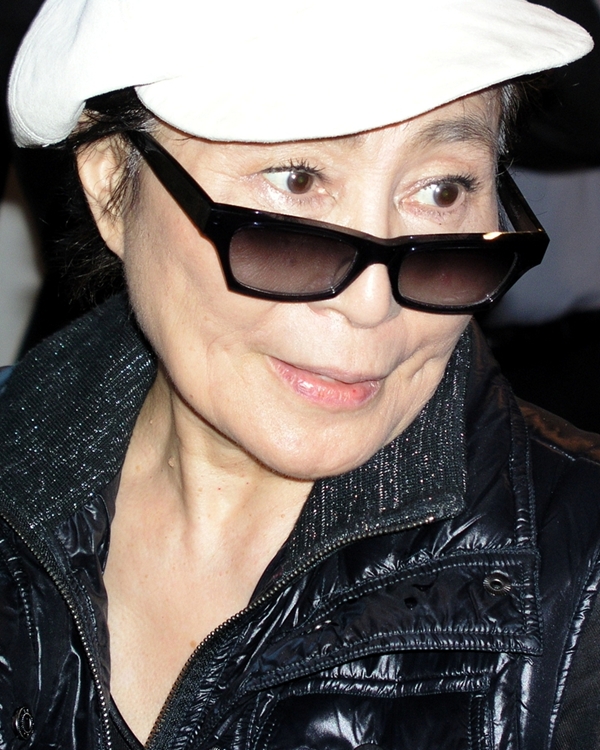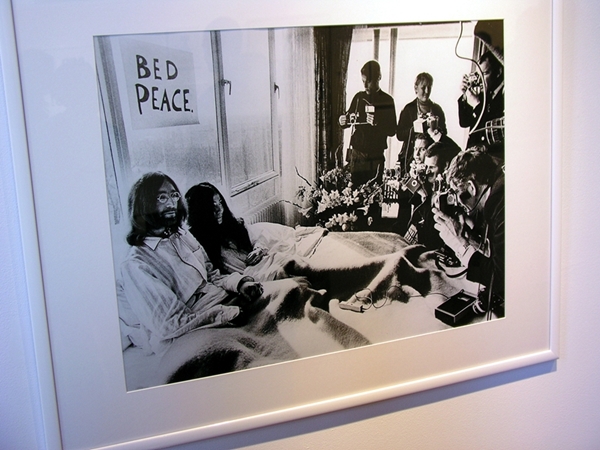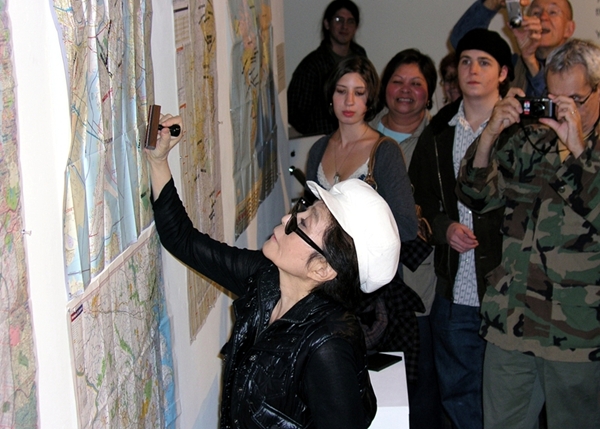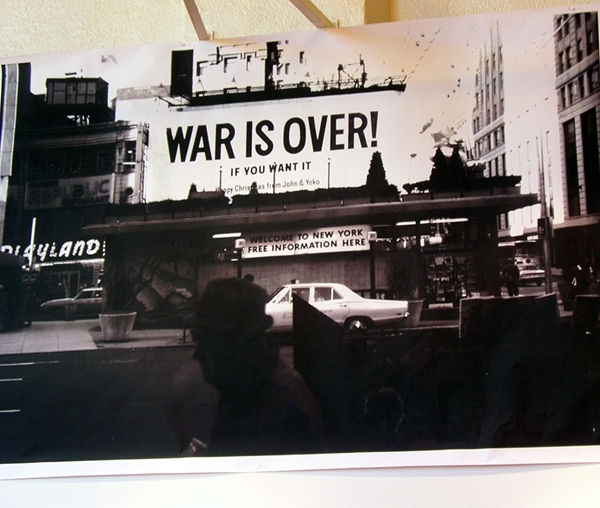“Arizona Sunset” was printed 16 by 20 on canvas last month. I was visiting the Desert Botanical Garden, which sits among the red buttes of Papago Park between Phoenix and Scottsdale, Arizona, one recent February when I noticed an aircraft leaving a trail high in the sky. Some of the cacti at the arboretum are 80 years old, dating from before the garden’s opening in 1939. I thought an elemental contrast might prove interesting. The setting sun is at my back and illuminates this looming stand of cacti. I’m pleased with it printed on canvas. Looks great in all levels of light, and hangs in my dining room, a modernist touch in a Victorian home built a generation before the Wright Brothers ever saw Kitty Hawk, N.C.
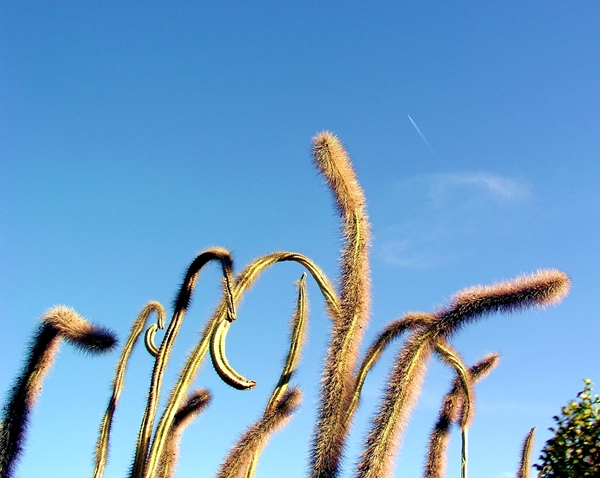
While selecting photographs to show in the 2009 Vital Voices exhibition in the Jersey City Artists Studio Tour, the influence of three master photographers seemed obvious. I’ve loved their work for decades, so I wasn’t surprised. There’s not a photographer alive whose vision has not been influenced, either directly or indirectly, by their ways of seeing.
“The Quartzsite Beauty Salon, Quartzsite, Ariz.” – The town of Quartzsite, pop. 3,354, is in western Arizona near the California border. A popular RV camping ground for winter tourists, its gem and mineral sellers and more than a dozen general swap meets attract more than a million people a year to the only town on the interstate between Phoenix and California. It was a bright February day when I stopped there for lunch at a just-the-basics restaurant, and across the street was a beauty parlor waiting for business to walk through its door.
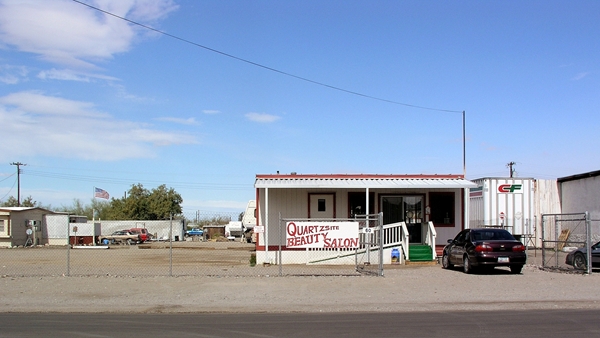
Revered for finding quiet beauty in unadorned people and small-town architecture, Walker Evans was born into wealth and was educated at Phillips Academy and Williams College before dropping out and spending a year in Paris, then joining the New York art crowd. He is best known for documenting rural life and poverty during the Great Depression for the Farm Security Administration. His book with the author James Agee, “Let Us Now Praise Famous Men,” focused on three sharecropper families in southern Alabama, was published in 1941. His 1938 show at the Museum of Modern Art was the first the museum devoted to a single photographer; it staged another comprehensive exhibit in 1971. Walker Evans died in 1975, having spent several years teaching at Yale after writing and editing for 20 years at Time and then Fortune magazine. Except for 1,000 negatives owned by the Library of Congress and in the public domain, the Metropolitan Museum of Art owns the copyright on all of his works in all media. He is quoted as saying his goal as a photographer was to make pictures that were “literate, authoritative, transcendent.”
“Calla Lilies, San Francisco, January 2009” – It was raining when my plane landed and in my first walk around my friends’ neighborhood I spotted these callas, still wearing raindrops, growing in a cement trough squeezed between the driveway and front staircase of an otherwise ordinary home.

Considered the quintessential woman photographer of the 20th century, Imogen Cunningham’s first job out of college in 1907 was making platinum prints in the darkroom of Edward S. Curtis. The photographer whose work documented the lives of the various North American Indian tribes operated one of the most successful portrait studios in Seattle. Cunningham’s independent college study had focused on chemistry and optics, as photography was such a young medium that there were no courses discussing “vision” or “expression.” It was Pictorialism – doing in dreamy, soft-focus photos what painters had been doing – that was the dominant photographic style. Always on the cutting edge even as she raised three children and operated her own successful Seattle portrait studio, Cunningham by the early 1930s was a leading Modernist photographer, a co-founder of the Group f/64, which valued sharp focus and helped bury the Pictorialist style, and her iconic studies of magnolia blossoms and other flowers, as well as nudes, movie star photos for Vanity Fair, and industrial landscapes, moved the medium during the 1920s, 1930s and 1940s. In 1945, Cunningham accepted a teaching position in the first fine art photography department at the California School of Fine Arts, and continued to take photos until shortly before her death at 93 in San Francisco in 1976.
“The Pennsylvania Woods” – In my photo shot from a walkway at Falling Water, the Frank Lloyd Wright house, we are looking down, across and up into a wilderness area that is under the protection of the Western Pennsylvania Conservancy.
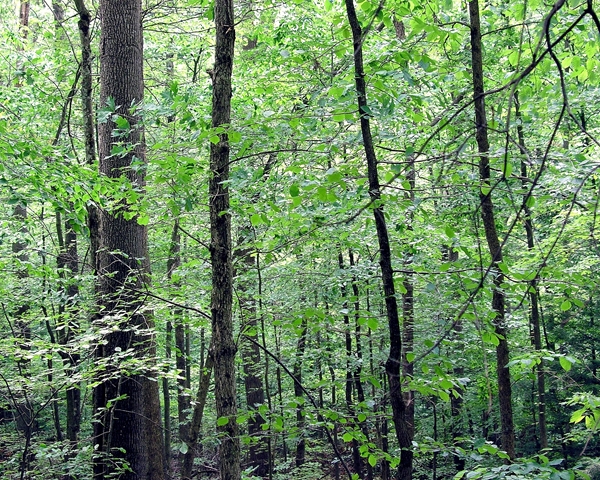
From the 1940s through the 1970s, Eliot Porter’s nature photography set new standards in color photography, and in presenting the natural world, at a time when most “serious” photographers were limited to black and white and color was considered “too literal.” Porter’s entire body of work, and in particular his first book for the Sierra Club, “In Wilderness Is the Preservation of the World” (1962) with text from Henry David Thoreau, gave early momentum to the modern conservation movement. Porter died at age 89 in 1990, and bequeathed his professional archives, containing 10,000 prints, 84,000 color slides and transparencies, and 4,400 black and white negatives, to the Amon Carter Museum in Fort Worth, Texas. A biography and a review of a book about Porter can be found here.
Saturday night in Hoboken. Art time. Party time. And I was in the mood for both, having spent all afternoon staring at only three my own photos in Photoshop and learning new moves and tools through trial and error with a good friend who’s slightly more proficient. So I made my way down to the opening reception for “I Love My Life,” a major fall group art show at the Eureka Art Gallery, 259 First St. (Park-Willow), accessible for the night through the rear garden courtyard (pretty twinkling lights) around the block on Newark Street.
Not many photographs up, but plenty of eclectic art created by 35 artists in many media. Roland Ramos, a mover and shaker in the Hoboken art scene, put it all together. Lovely space, as you’ll see below.
In his intro to the show Roland recalls how he shared with a dispirited woman friend going through difficult times that her new mantra should be “I Love My Life,” and how she should keep saying it “until it says you.” This is a very wise idea. Everything in the show is tied to this mantra “I Love My Life.” Positivity is indeed what we need in bad times, in fact at all times. Be here now was a theme of my Saturday.
Of course I schmoozed with some Jersey City art scenesters, and took snaps as I headed home. Didn’t get names. But we’ll meet again. Everyone’s looking forward to the Jersey City Art Studio Tour on Oct. 3 and 4, when 600 artists’ works will be on view in dozens of galleries and public spaces and the Downtown Jersey City art scene will be rocking. I’ll have three of my photos in a group show. I love my life.
Roland’s I Love My Life show, open Monday through Saturday from 9 a.m. to 6 p.m., will be on view through Saturday, Oct. 10, and have a closing reception that night beginning at 7 p.m.
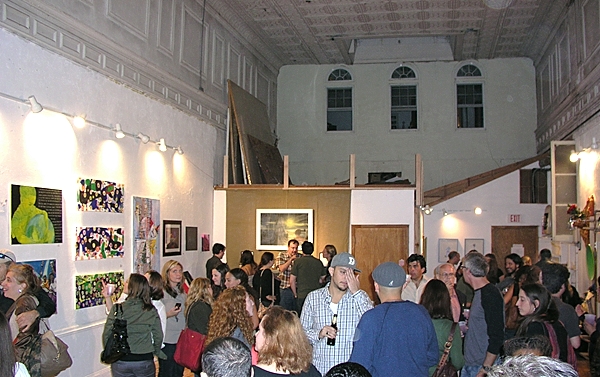
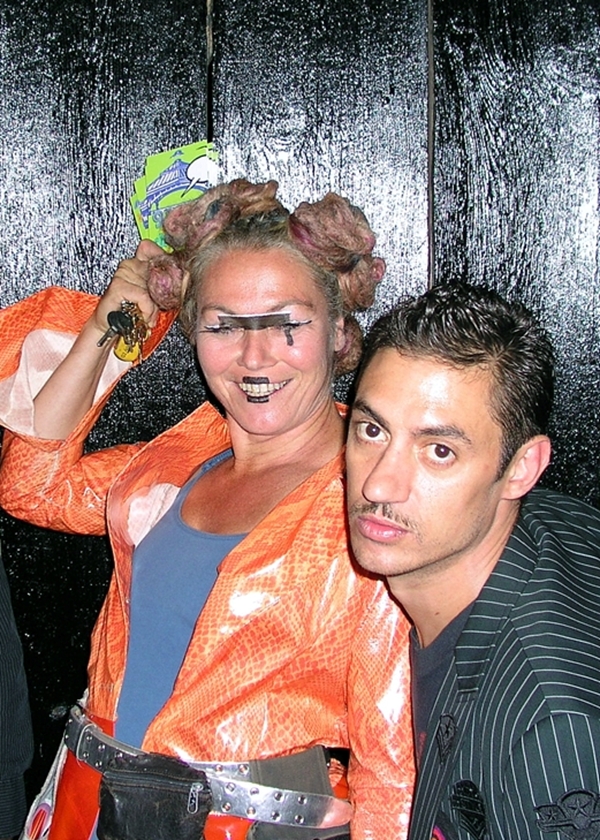
There’s the dolled up one, presented here http://www.newsweek.com/id/214124 by Newsweek in late August. Then there’s the face I saw when she came to New Jersey City University one Sunday afternoon last fall to open her Imagine Peace show in a couple of the school’s galleries. She drew every celeb-watcher in Jersey, and their cameras. The show itself was beautifully presented, full of photos of Yoko and John playing in the spotlight of the world’s attention 40 years ago and asking for peace in much the same way artists of all kinds could and should be doing right now. Viewers were invited in one gallery to take an “Imagine Peace” stamp, get some ink on it, and stamp the words on any of several maps. I put “Imagine Peace” on Australia, where I’ve got a friend who went home recently after 40-plus years in America. As one might expect with her years of experience, Yoko is expert at moving through a crowd, even as the shortest person in the room. At 75 or so, she’s forever young.
